Panchkarma Therapy
Definitive Guide
1. Panchkarma Therapy?
1. Purv Karm
2. Pradhan Karm
3. Paschat Karm
2. Types of Panchkarma Treatment
1. Shirodhara
2. Nasyam
3. Vaman
4. Raktmokshana
5. Virechan
3. What are the Benefits of Panchkarma Treatment for you?
1. Purification
2. Relaxation
4. Panchkarma Procedure
5. Where you can take best Panchkarma Treatment?
Panchkarma Therapy?
Panchkarma, or complete body cleansing, is a process that’s been practiced in Ayurvedic medicine since ancient times, and continues to be used in modern-day treatments. This guide will help you understand what Panchkarma therapy entails, who can benefit from it, and how it works in conjunction with other Ayurvedic treatments like Yoga and naturopathy therapies to create an effective healing regime that can improve both your mental and physical health.
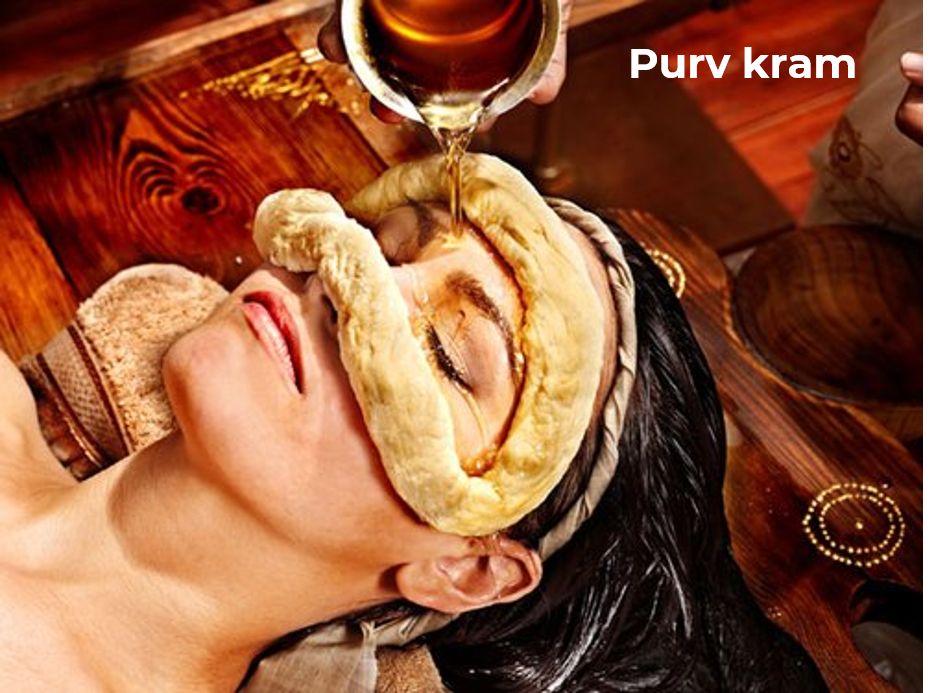
Purv Karm Treatment
In Traditional Indian healing, there are five types of therapies (Karmas) that help balance life and body functions. The panchkarma treatment is a balanced combination of cleansing, detoxification, and rejuvenation therapy in one. We believe it’s one of the most effective ways to address chronic conditions naturally. A panch karma typically includes a medicated oil massage, nasal cleansing, tongue scraping (Halwa puri), enema or Vamana/Virechana/Nasya purification therapies. While these may sound scary on their own, they all make sense when you consider why they’re used: To cleanse and rejuvenate your body from within.
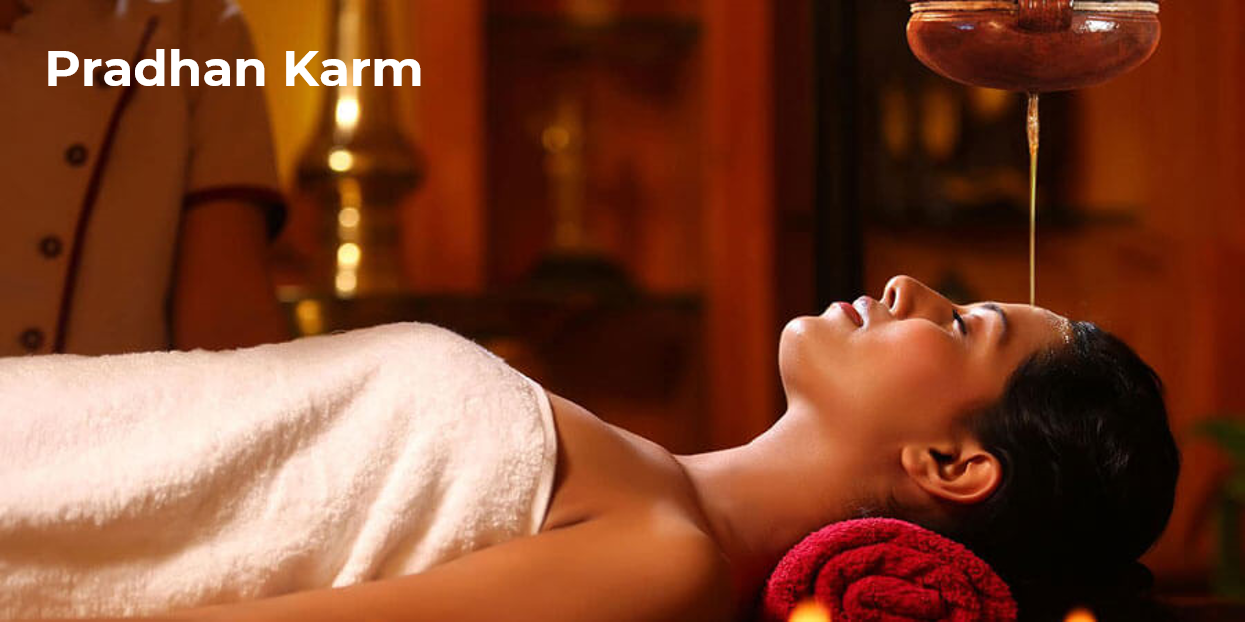
Pradhan Karm
According to Ayurvedic philosophy, Pradhan Karm is a conglomeration of 4 factors. They are- doer( karta), action(Kriya),doer's mental state and goal (Karana). Pradhan Karm can be good or bad depending on these 4 factors. According to Bhagwad Gita kartarpurushah Purusharthascha Pradhan Karmanasho vipashchitah . The main purusharthas are Dharma, Artha, Kama and Moksha. If a person is fulfilling these 4 things in his life then he has a balanced karm.
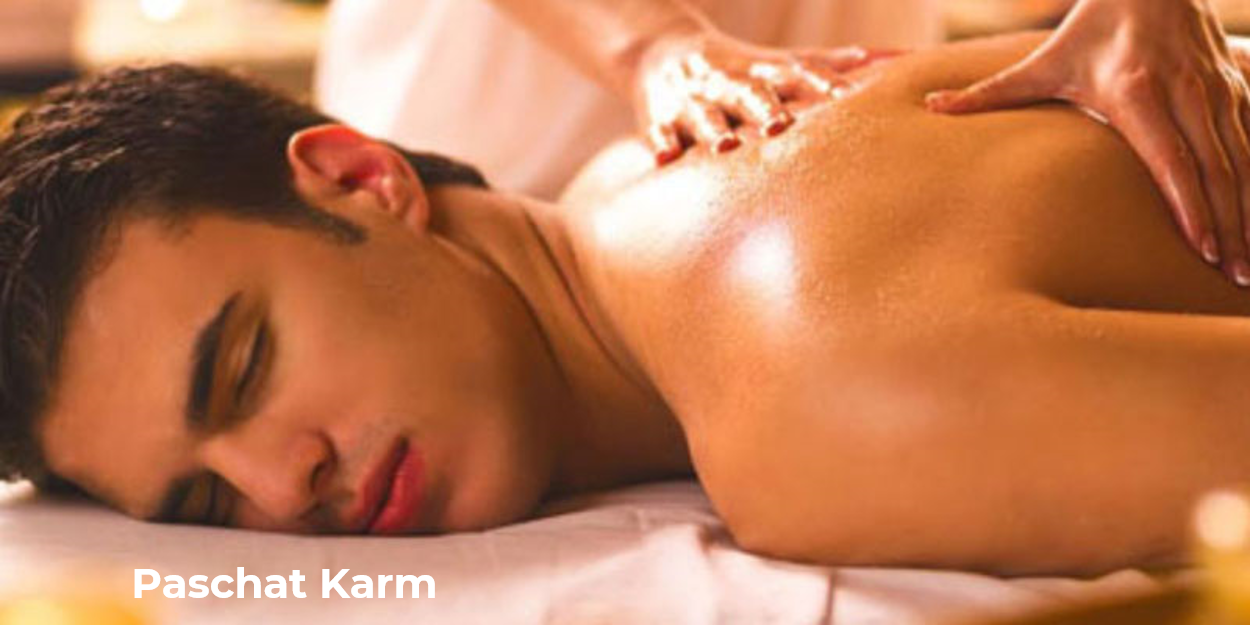
Paschat Karm
Paschat karma is a special type of Ayurvedic treatment that is meant for those suffering from debilitating diseases and people who do not have a strong immune system. The word paschat comes from Sanskrit and means to heal. With its holistic approach, paschat karm aims at curing chronic health problems by restoring balance between body, mind and spirit. While in standard ayurvedic therapy herbs are ingested orally, in paschat karm these herbs are taken through oleation (skin application). For those with poor appetite, more concentrated forms of ayurvedic medicine can be prepared as herbal oil massages or even given intravenously.
Types of Panchkarma Therapy
The most common treatment is basti (Internal Bath). Basti is useful for releasing toxins from large and small intestines, liver, kidneys, spleen and pancreas. All other panchakarma procedures are used for specific conditions like sinusitis, bronchitis, constipation etc. Here are a few examples of panchakarma methods: Shirodhara or Sirovasti: In shirodhara or sirovasti treatment warm medicated oil is poured on forehead and scalp; it helps in getting rid of headaches, anxiety etc. Abhyanga or Dermabrasion: Abhyanga involves gentle kneading massage using herbs infused oil called snanam/balyam.
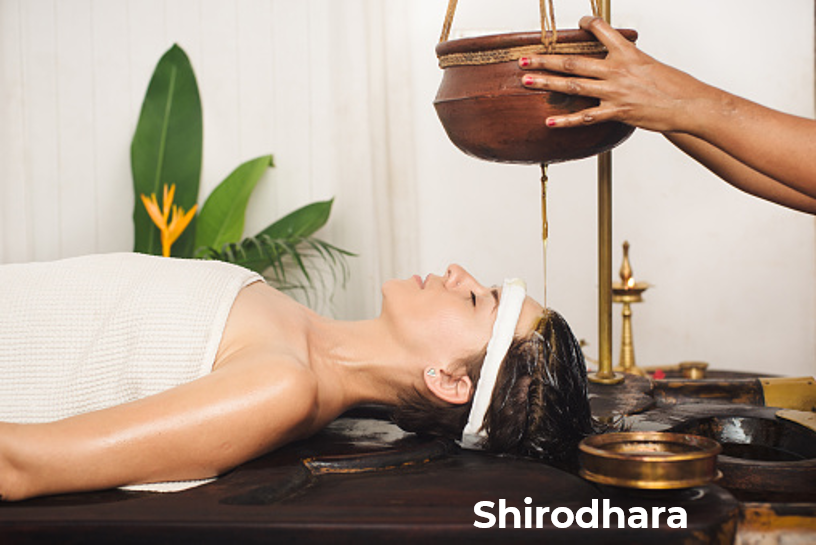
Shirodhara Treatment
Shirodhara is one of five important dosha-balancing treatments used in Ayurvedic medicine. Shirodhara, which means stream of oil, involves pouring a continuous stream of specially prepared herbal oil over your forehead, while you lie comfortably on a massage table. This can help relieve tension and stress and allow you to focus more easily on life's tasks, as well as induce deep sleep—two things that are often in short supply when we’re feeling overwhelmed by our daily responsibilities. It also improves mood swings that often come with these stresses and tension headaches. To lose weight safely but quickly, try shirodhara once or twice per week for 20 minutes at a time.
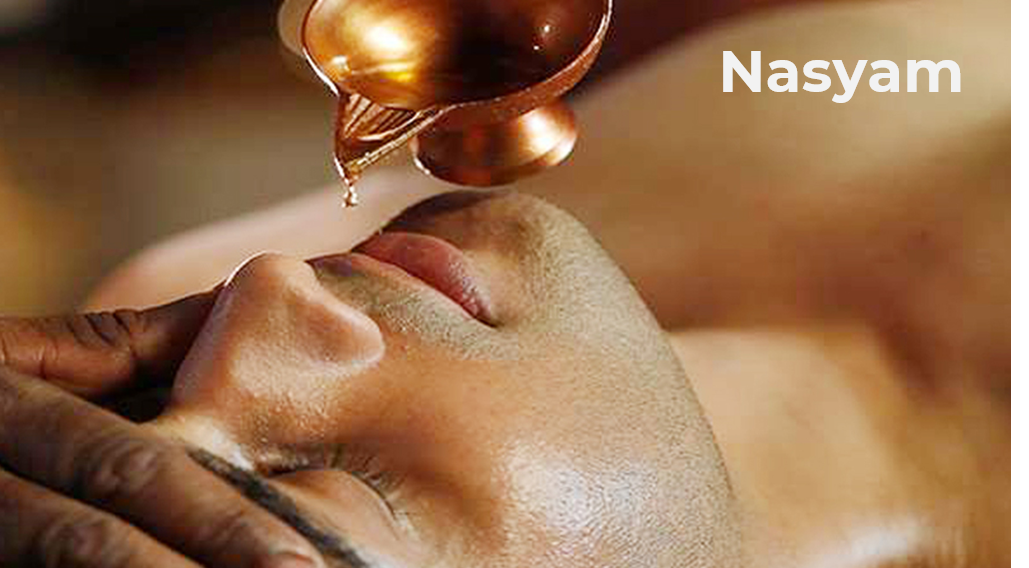
Nasyam Treament
This one involves a series of steam baths, enemas and massages. The whole point is to rid your body of toxins by forcing them out via urine, sweat and stool. Traditionally, people used a variety of substances in order to purge their bodies — charcoal powder, jaggery (unrefined sugar), salt and sandalwood paste have all been used over time. Nasyam can also be done at home but it's important to consult an Ayurvedic doctor before beginning treatment, as it may not be appropriate for some conditions or individuals.

Virechan Treatment
The idea behind Virechan treatment is simple: avoid making your body work harder than it needs to. The best way to avoid toxins in our bodies is also one of my favorite pieces of health advice: just don’t put them there. That’s where I’ll start, though—avoiding toxins, both external and internal. Once you understand what makes up a toxin, you can work on eliminating or reducing those triggers. Once we have identified all of those trigger foods, we can begin treating them via various Ayurvedic procedures that deal with purifying and cleansing our systems. This part is called Virechan (detoxification), but remember when I said not to make your body work harder than it needs?
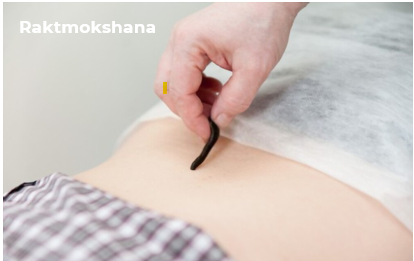
Raktmokshana Treatment
Those who are looking for a quick-fix to overcome their obesity should probably move on. Raktamokshana is an ancient treatment with no quick fixes—and it isn’t easy, either. The first step is a regime of nauli kriya and basti (done as part of panchakarma), which clears out toxins from every cell in your body and helps reduce extra fat. During that time, you also eat natural herbs, including licorice root and aloe vera, that cleanse your system naturally. After completing raktamokshana, your body is ready for other techniques such as yoga postures, breathing exercises or bandhas designed for weight loss in particular.
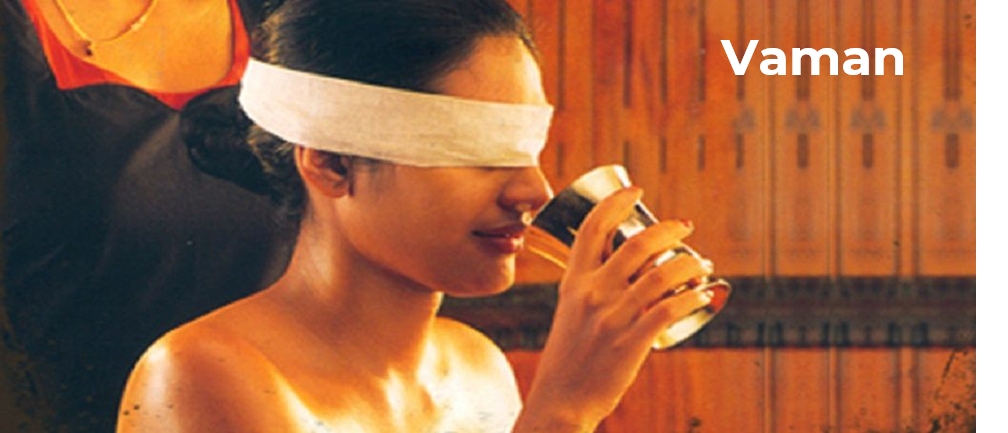
Vaman
Vaman, one of the five main types of panchakarma therapy, is based on using thermal agents (warm or cold) that stimulate certain organs. Vaman treatments often include herbal therapies and abhyanga (massage). Warm or hot liquids are ingested through a straw or other devices inserted in either nostril, which stimulates drainage. It is most effective for treating skin disorders and relieving sinus infections and congestion in general.
What are the Benefits of Panchkarma Therapy for You?
If you are experiencing a wide variety of health issues, whether physical or mental, Panchkarma therapy is worth looking into. These therapies have been used in Ayurvedic medicine for thousands of years, and they can promote better health when practiced regularly. Some of the most common benefits include increased energy levels, weight loss, reduced pain levels and lowered stress levels. To find out more about these benefits and how they can impact your life on a daily basis, continue reading our guide below.
Purification
According to Ayurvedic tradition, good health is all about balance. This can be achieved by eliminating excess dosha through panchkarma therapy (meaning five actions). These five steps of purification include nauli, which works on your digestive tract; basti, a form of enema that relieves constipation and stimulates digestion; virechana, which helps with indigestion and constipation; raktamoksha, which removes excess bodily fluids and waste products; and snehavasti or bhogavidya, a process involving warm herbal treatments designed to stimulate blood flow.
Relaxation
The foundational point of panchkarma is relaxation. Panch means five, and karma means actions or activities. So, combined, you have a set of five physical and mental activities meant to relax your body and your mind. The five types of treatment used in panchkarma are: Vaman (or vomiting), Virechan (emesis), Dhai-Pakvah (nasal purging), Nasya (application of medicinal oil) and Raktamokshanam (purgation with medication). Each process is designed to free up energy inside your body that may be blocked. So how does it work? And can it help you lose weight?
Panchkarma Procedure
There are various types of Panchkarma therapy that are performed by ayurvedic doctors. The most common is vaman, which involves inducing vomiting by having patients drink medicated water or soup. This is considered a purification process for pacifying Vata dosha, and it also helps in detoxifying agents from inside your body. Virechana, or emesis, is also prescribed for Vata balancing (purgation), but without drinking water or soup; instead, pills with herbs are given to patients in order to induce vomiting. All these steps of panchakarma help balance your Dosha's and increase absorption of nutrients through different body systems.
